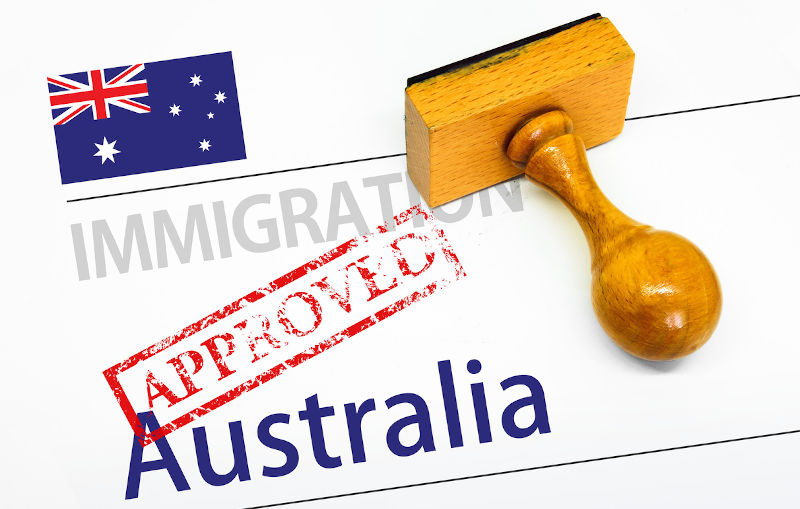Soon after the Albanese government was elected, new Home Affairs Minister Clare O’Neil startlingly declared Australia’s migration system was “in a state of disrepair.”
More recently she continued her criticism saying: “Australia’s migration system is broken. It is unstrategic. It is complex, expensive, and slow. It is not delivering for business, for migrants, or for our population.” She’s right. The reasons for the system failing are several, but one stands out: the securitisation of migration.
The government’s establishment of a review, “A Migration System for Australia’s Future” is a reasonable beginning in trying to untangle what’s gone wrong. But fixing a broken system requires a broad view. Minister O’Neil and the review team need to focus on deep cultural and operational problems that stem from the Coalition government’s transformation of Home Affairs into a labyrinthine super-portfolio, dominated by security issues.
With mammoth powers and a huge budget, these agencies have learned to operate with great secrecy, considerable arrogance, and seemingly with impunity. The result is that for many citizens, residents and potential visitors, basic issues of immigration are unduly difficult and barely comprehensible. As Peter Hughes explained in Pearls & Irritations, the average people who engage with the immigration system don’t need to be told it’s broken; they know from bitter experience.
The decisions made in the super-portfolio have real impacts for real people. Minister O’Neil has mentioned huge visa queues. Before the change of government, in correspondence with the Auditor General, the ALP’s Member for Bruce, Julian Hill, pointed to huge delays in partner visa processing, arguing that these were due to inefficiency and discrimination. Some attribute these problems to then Minister Dutton’s 2020-21 decision to limit the number of partner visas.
Yet Dutton’s effort to limit who Australians could choose as partners came on top of rejection rates of around 40% in 2016-18. Over the years, the cost to Australian citizens of sponsoring a partner has risen to more than $8,000 in visa fees alone. If anyone in the rejected 40% wishes to appeal, this can only be done through the Administrative Appeals Tribunal at a cost of over $3,000.
Even the humble tourist, so coveted since the pandemic, can face an uphill task in getting through the opaque Home Affairs immigration web. While the average grant of a tourist visa is usually more than 90% for all applicants, those refused have a record that impacts future travel to Australia and to some other countries as well.
A recent case was the refusal of an Asian woman’s visit visa application is revealing. The official refusal letter said the department was not convinced that she would return to her country. With relatives in Australia and married to an Australian, she had previously visited Australia more than a dozen times, always in accordance with her visa. We might assume that this was why, before the pandemic, she was granted a 3-year entry visa. Because of travel restrictions, she was unable to use it. Because that visa had expired, she applied for a new visa, only to be rejected. According to the official letter, her recourse is the $3,000 appeal.
A stupid error? There’s no way to know. Accountability and transparency are missing in the decision-making process, as they have been for partner visas, decisions on refugees, and many others.
In making decisions to refuse a tourist visa, prevent Australians from living with their partners, or force refugees into offshore processing, the underlying position seems to be that Australia remains protected. The fact is that “protecting Australia” and securitising immigration is at the heart of the problems for “consumers” of the immigration system. It goes some way to explaining why the system is broken.
Reinforced by the pandemic shutdown, a Fortress Australia operational culture has been embedded in Home Affairs and this underpins secrecy, arrogance, and impunity. It also protects incompetence, both petty and gross.
Of course, it was under the Coalition that the portfolio’s operations became security focused. Home Affairs’ became muscular and militarised with the Coalition government’s Operation Sovereign Borders in 2013. Major security agencies were eventually arranged into the new super-portfolio: Australian Border Force, Australian Federal Police, Australian Criminal Intelligence Commission, Australian Security Intelligence Organisation and Australian Transaction Reports and Analysis Centre.
Immigration became a part of this security apparatus with the July 2015 integration of the Australian Customs and Border Protection Service with the Department of Immigration and Border Protection and the creation of the Australian Border Force. This securitisation of migration was part of a process that transformed refugees, potential migrants, visitors, and even Australian citizens into potentially dangerous “suspects.”
Where Immigration once provided services to Australians, future Australians, and visitors, it has now become an anonymous and threatening agency, charging huge fees, acting with seeming arrogance, and causing mental anguish and trauma for individuals and families, with little accountability, except at a large additional costs to the “suspects.” The pendulum had swung decisively away from service to investigation and a belligerent “protection” of Fortress Australia. And, as Minister O’Neil says, it is a broken system.
Taxpayer-funded agencies should be doing a lot better than this and fixing it should be a priority. But, changing bureaucratic arrangements is one thing; undoing a toxic culture of secrecy, arrogance, and suspicion requires a further dismantling of the super-portfolio.
Kevin Hewison
Kevin Hewison is Weldon E. Thornton Distinguished Emeritus Professor of Asian Studies at The University of North Carolina at Chapel Hill and resides in Perth. He is the editor of the Journal of Contemporary Asia.
